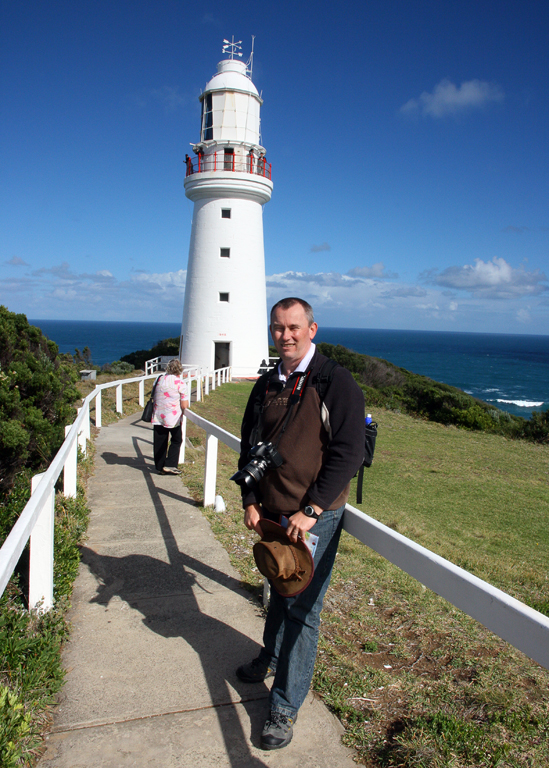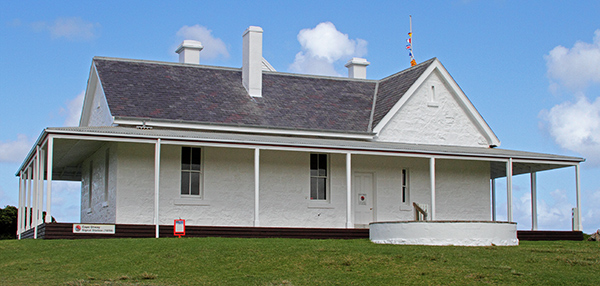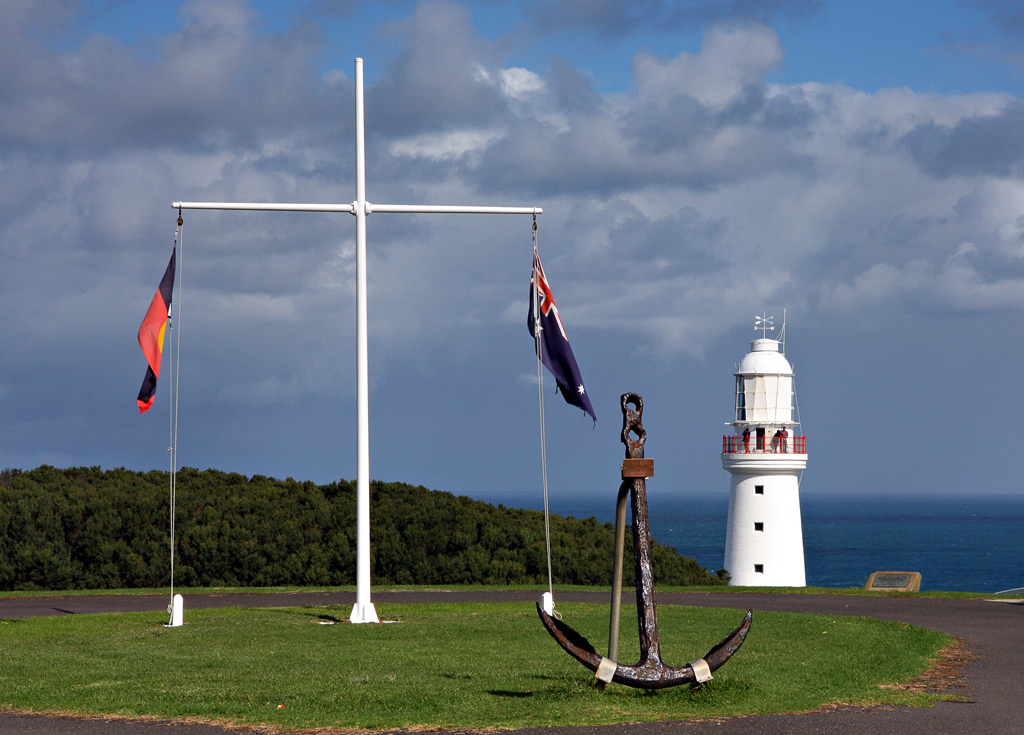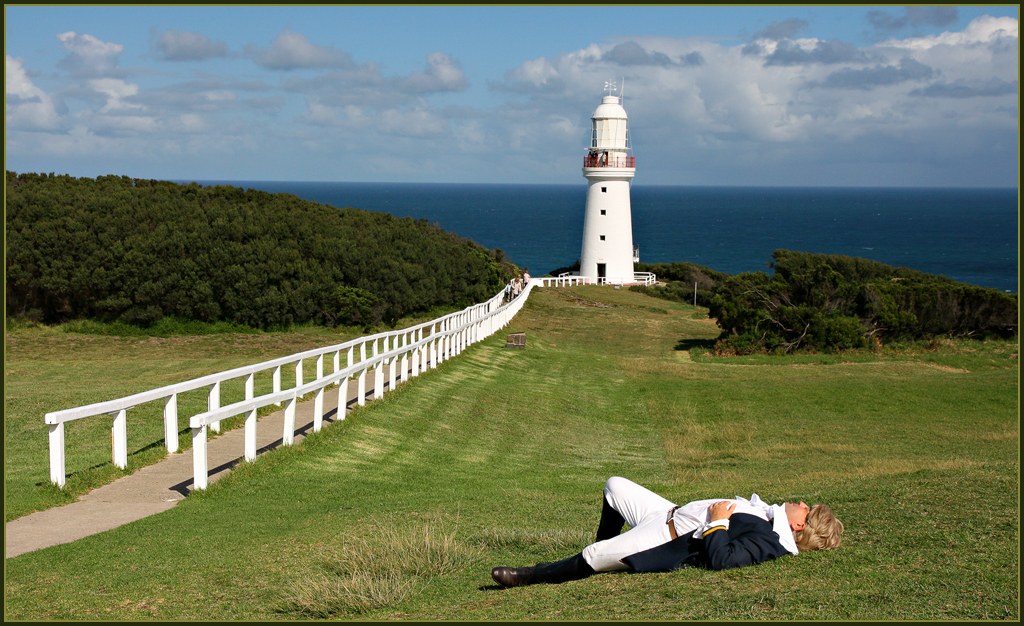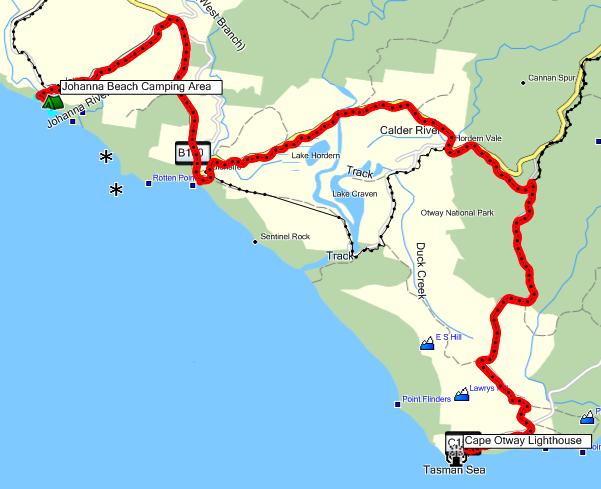We had a good night sleep with everyone being quiet; it was a cold night though. We had a nice sleep in and a leisurely morning before packing our lunch and heading off to the Cape Otway Lightstation. The light has been operating since 1848 and is on towering sea cliffs 80 meters above where Bass Strait and the Southern Ocean collide.
Before the lighthouse was built hundreds of lives were lost due to many shipwrecks on the rugged coast. At the Lightstation there is also a restored Telegraph Station and a World War Radar Bunker. The Telegraph Station was built to house Australia’s first Submarine telegraph cable, which linked Tasmanian and the mainland. When the cable failed the building became a Lloyds’ Single Station, signalling passing ships and telegraphing the details to Melbourne. Between 1882 and 1933 it was a school and accommodation for the Armed Services and Lightkeeper’s families.
The Lightstation is also home to the Head Lightkeeper’s house which was built in 1857 from green sandstone from a nearby quarry. Cape Otway is an important reference for the Australian Bureau of Meteorology.
The weather is recorded 24hrs a day 365 days a year with weathermen reporting observation to the Bureau twice a day. The Assistant Lightkeeper’s cottage built in 1858 and housed two assistants and their families. There is also another cottage used as a workshop built in 1850.
The Manager’s House was built in 1970. The Manager’s House is now used for accommodation. The Radar Bunker was built in 1942 after the US Steamship City of Rayville was sunk by a German mine off the Cape, in November 1940. The narrow gap between Cape Otway and King Island less than 90km was so hazardous at least 18 ships were wrecked there. In 1835 almost 250 lives were lost when the convict ship Neva was shipwrecked off King Island. In another major shipping disaster 399 immigrants perished when the Cataraqui was wrecked off King Island in 1845. This cause the people to demand a lighthouse was built in the area.
The Cape Otway Lighthouse was built in 1848, originally fuelled by whale oil, then kerosene and later electricity, in shone 48kms out to sea. The old light was decommissioned in 1994 and replaced with a close-by solar-powered automatic beacon. It costs $16.50 to go to the Lightstation, includes a climb up to the top of the lighthouse. It is well worth it, we spent several house there, it was very windy at the lighthouse, especially at the top.
Coming out, along the road leading back to the Great Ocean Road we saw at least 5 Koala’s. People were stopping everywhere to take photos of them, we were fortunate to find one that wasn’t too high up the tree. We spent a nice relaxing afternoon back at the van before trying for some sunset shots but when the weather changes here it happens fast and all we got was a bit wet as it started to rain.
